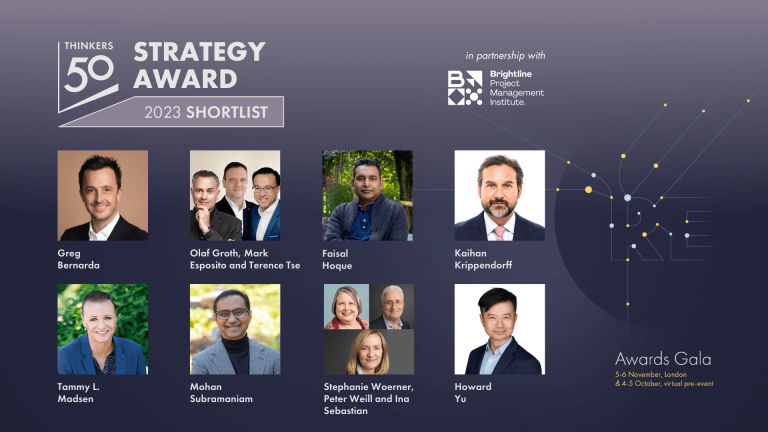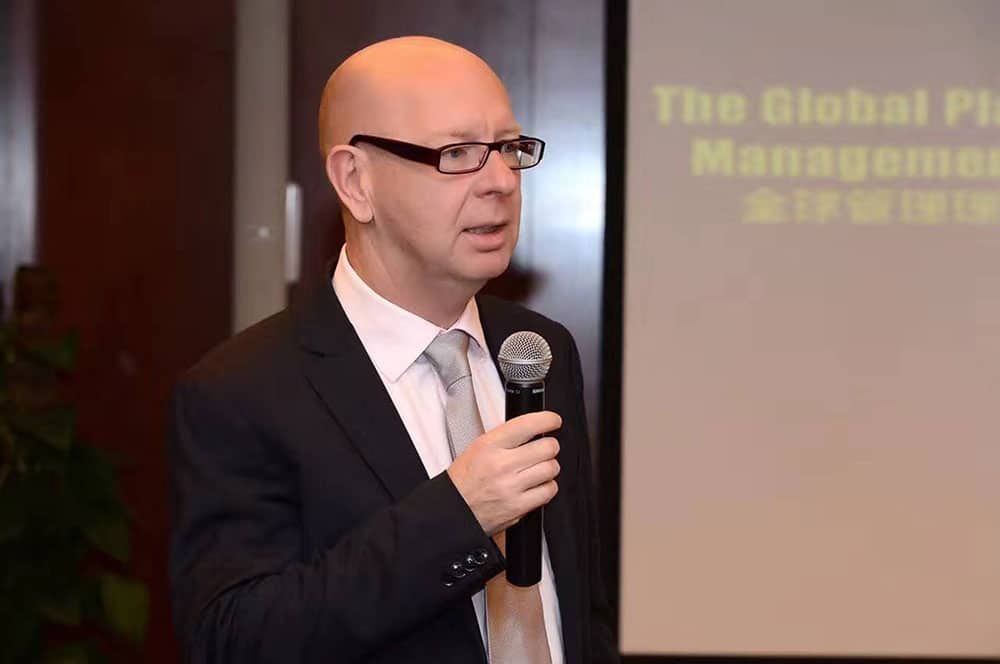

Stuart Crainer
Imagine you are a CEO. You take your top team away for a strategy session at a suitably well-furnished hotel somewhere in the countryside. Over two days of discussions, you emerge with a great new strategy for the organization. The future is mapped out with brilliant simplicity, markets will be disrupted, the competition won’t know what has hit them. You get back to the office and let some bright consultants loose to test out the strategy. The numbers add up, the insights into where the market is going appear robust, and then…. Well, and then you put the brilliantly conceived strategy into the top drawer of your desk (next to the hip flask, picture of your first love and ancient teddy bear).
Sound far-fetched? Of course, if you don’t tell anyone about your strategy it is unlikely to become reality. How can you galvanise people if they don’t actually know what the strategy is?
Yet, this is what happens repeatedly in organisations. The creation of strategy is something which business schools, consultants, coaches and advisors have mastered. In contrast, actually communicating the strategy to the world is something which tends to be left to minions or to forces of nature. CEOs don’t put the strategy documents into a drawer and then forget about them, but sometimes they might as well have done.
In many organizations fundamental questions remain hanging in the air mysteriously. What is a company’s mission? And what is its strategy to win in the market? Basic questions, but ones which often go unanswered by some of the world’s leading corporations.
New research by ECSI Consulting (ecsi-consulting.com) looked at the top 50 companies in the Fortune 500 ranking of US companies. It examined how the companies communicated their mission and strategies in their annual reports and websites.
The research found that vagueness, inconsistency and elusiveness are the reality – worrying news for any investors seeking to find out more about a company before investing or for potential employees of these corporate giants trying to learn more about the companies.
“The results are disturbing for investors, employees and many others,” says Alessandro Di Fiore of ECSI (who we featured on the Thinkers50 Radar for 2016). “How can companies and their leaders be held to account if their purpose and the strategies they are seeking to execute are not clearly and consistently communicated?”
While 94 per cent included their mission statement on their website, only half of the companies included their mission statement in their annual report.
Strategies are similarly difficult to pin down, i.e. a clear statement on how the company is going to win in the market and gain clients. A total of 58 per cent of the companies included their strategy in their annual report. But only a mere 12 per cent included a dedicated, clearly articulated strategy section. On websites, 54 per cent included some kind of strategy description.
Strangely perhaps, the most elusive sector is the high-tech world of computing, ICT and telecoms. Here companies appear unwilling to be bound by static guidelines or held hostage by public statements of strategy. Perhaps the logic is that the tech world is moving so quickly that any notion of strategy is likely to be proved worthless, better to be opportunistically vague about your intent.
But it‘s not only the fact that information is notable by its absence. When companies do share details of their missions and strategies, the results are often underwhelming.
The obvious is often re-stated with buzzwords added to suggest industry know-how. Goals, such as “creating competitive advantage” or “being innovative”, are routinely mistaken for strategy. And there is a repetitive focus on “maximizing shareholder value”, “delivering profitable growth” and so on.
“A good strategy description should answer three fundamental questions,” says Alessandro Di Fiore. “How are we going to win in the market? How we are different? And why is that difference relevant for our existing and potential customers?”
But vagueness rules in many annual reports. Strategy statements are usually unable to answer the question: “How is the company going to win in the market and attract customers?” The insurance giant AIG, for example, states: “Our strategy is focused on enhancing the value and competitive position of our insurance businesses and investing our capital where we can achieve attractive risk-adjusted returns, while maintaining strong levels of liquidity and capital.”
Others make elusiveness their strategy. Apple is notably reticent while Walgreens, the drug store chain, chooses to brazen it out with the simple statement: “We do not provide detailed information on specific topics, such as our corporate strategy.”
Some companies do meet the strategic clarity challenge. “Our strategy is to provide our members with a broad range of high quality merchandise at prices consistently lower than they can obtain elsewhere,” says Costco while Microsoft says its strategy is to “build best-in-class platforms and productivity services for a mobile-first, cloud-first world”.
“A strategy should be able to be distilled down to 15 compelling, meaningful and memorable words articulating how we are going to win in the marketplace,” says Alessandro Di Fiore. “It needs then to be communicated clearly and consistently inside and outside. This research suggests there is still a long way to go for this to be achieved. Even on the most fundamental company’s document for all stakeholders – the Annual Report – there are gaps”.
You might say that annual reports and website information is for the external world and that companies may well be communicating their strategies brilliantly internally. This may be so in some organizations, but it seems unlikely. Vagueness and obfuscation are habitual and cultural. Where would you like to work? Where would you choose to invest your money? In a company which clearly and repeatedly articulates its mission and strategy or one which does not?
Stuart Crainer is co-founder of the Thinkers50.

Thinkers50 Limited
The Studio
Highfield Lane
Wargrave RG10 8PZ
United Kingdom

Thinkers50 Limited
The Studio
Highfield Lane
Wargrave RG10 8PZ
United Kingdom

| Cookie | Duration | Description |
|---|---|---|
| LANG | 9 hours | Linkedin set this cookie to set user's preferred language. |
| nsid | session | This cookie is set by the provider PayPal to enable the PayPal payment service in the website. |
| sp_landing | 1 day | The sp_landing is set by Spotify to implement audio content from Spotify on the website and also registers information on user interaction related to the audio content. |
| sp_t | 1 year | The sp_t cookie is set by Spotify to implement audio content from Spotify on the website and also registers information on user interaction related to the audio content. |
| tsrce | 3 days | PayPal sets this cookie to enable the PayPal payment service in the website. |
| x-pp-s | session | PayPal sets this cookie to process payments on the site. |
| __cf_bm | 30 minutes | This cookie, set by Cloudflare, is used to support Cloudflare Bot Management. |
| Cookie | Duration | Description |
|---|---|---|
| l7_az | 30 minutes | This cookie is necessary for the PayPal login-function on the website. |
| Cookie | Duration | Description |
|---|---|---|
| CONSENT | 2 years | YouTube sets this cookie via embedded youtube-videos and registers anonymous statistical data. |
| _ga | 2 years | The _ga cookie, installed by Google Analytics, calculates visitor, session and campaign data and also keeps track of site usage for the site's analytics report. The cookie stores information anonymously and assigns a randomly generated number to recognize unique visitors. |
| _gat_gtag_UA_10408481_1 | 1 minute | Set by Google to distinguish users. |
| _ga_ZP8HQ8RZXS | 2 years | This cookie is installed by Google Analytics. |
| _gid | 1 day | Installed by Google Analytics, _gid cookie stores information on how visitors use a website, while also creating an analytics report of the website's performance. Some of the data that are collected include the number of visitors, their source, and the pages they visit anonymously. |
| Cookie | Duration | Description |
|---|---|---|
| NID | 6 months | NID cookie, set by Google, is used for advertising purposes; to limit the number of times the user sees an ad, to mute unwanted ads, and to measure the effectiveness of ads. |
| test_cookie | 15 minutes | The test_cookie is set by doubleclick.net and is used to determine if the user's browser supports cookies. |
| VISITOR_INFO1_LIVE | 5 months 27 days | A cookie set by YouTube to measure bandwidth that determines whether the user gets the new or old player interface. |
| YSC | session | YSC cookie is set by Youtube and is used to track the views of embedded videos on Youtube pages. |
| yt-remote-connected-devices | never | YouTube sets this cookie to store the video preferences of the user using embedded YouTube video. |
| yt-remote-device-id | never | YouTube sets this cookie to store the video preferences of the user using embedded YouTube video. |
| yt.innertube::nextId | never | This cookie, set by YouTube, registers a unique ID to store data on what videos from YouTube the user has seen. |
| yt.innertube::requests | never | This cookie, set by YouTube, registers a unique ID to store data on what videos from YouTube the user has seen. |
| Cookie | Duration | Description |
|---|---|---|
| DEVICE_INFO | 5 months 27 days | No description |
| loglevel | never | No description available. |
| m | 2 years | No description available. |
Thinkers50 Limited has updated its Privacy Policy on 28 March 2024 with several amendments and additions to the previous version, to fully incorporate to the text information required by current applicable date protection regulation. Processing of the personal data of Thinkers50’s customers, potential customers and other stakeholders has not been changed essentially, but the texts have been clarified and amended to give more detailed information of the processing activities.